31/03/2022
Solar and wind and other
clean sources generated 38% of the world's electricity in 2021 with some countries
like Vietnam making spectacular gains in the renewable production. Other countries
that have seen a huge amount of growth include the Netherlands and Australia.
Over the past year Gas prices
have increased which has meant that now Gas is more expensive than Coal.
Therefore, in some countries there has been a large uptake in the amount of
coal being used, and the current war in Ukraine won’t help this situation.
Although there is a shift towards coal many of the major economies
including the US, UK, Germany, and Canada are aiming to shift their generation
to 100% carbon free electricity within the next 15 years.
Photo Pixabay
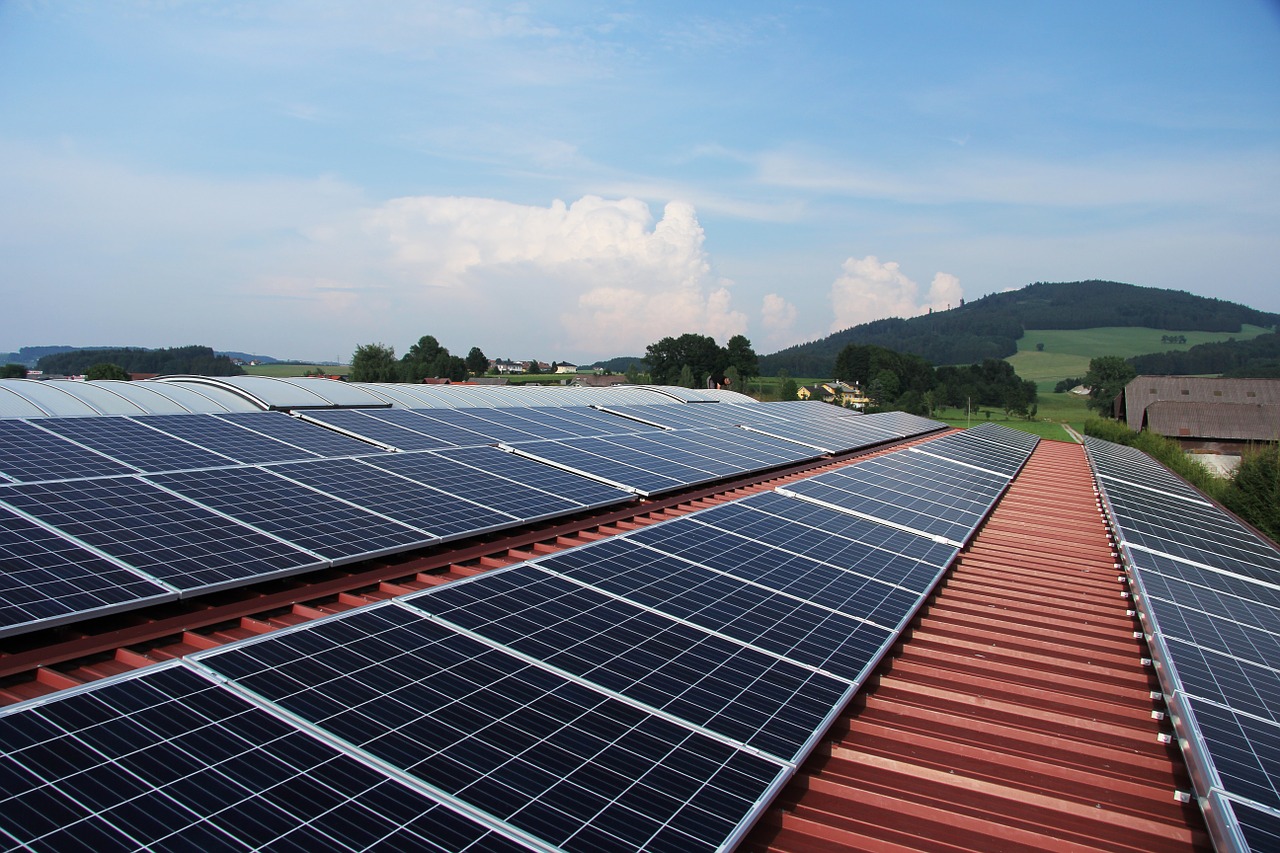
30/03/2022
Peñuelas Lake, which is around 70 miles west of the capital Santiago,
which supplied drinking water for nearly two million people in Chile has
dried up over the course of six years due to a 12-year drought.
With the Lake gone, water has to be tankered into the city to provide drinking
water. This is not enough to provide water for the local agriculture, which has
virtually disappeared leaving thousands of livestock dead. This area of Chile
is no stranger to droughts but this last one has lasted several years with no
significant rain to re-stock the large lake that has supplied the city and surrounding
region with water.
Photo Pixabay
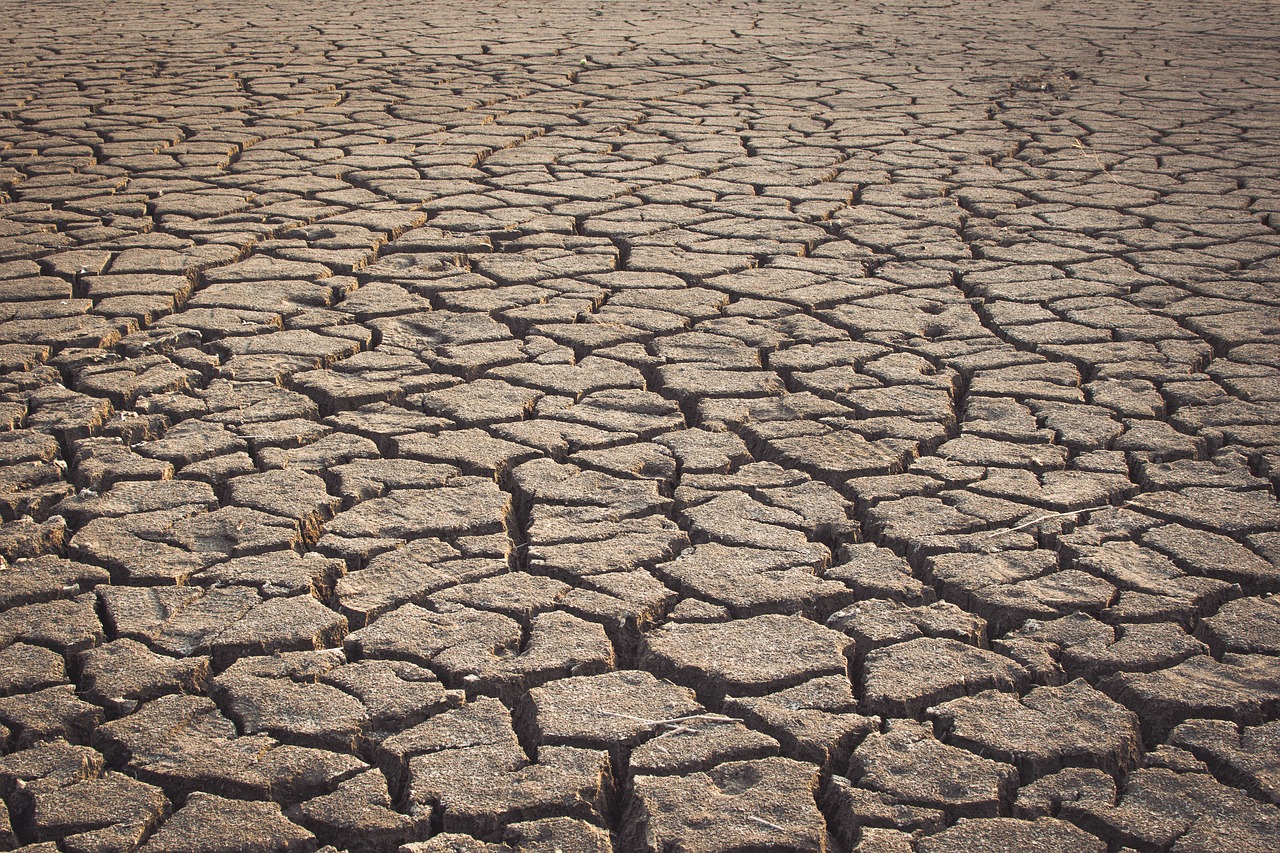
29/03/2022
Warming across the country has, however, not been even with
some regions experiencing more rapid change than others. Heatwave thresholds in
8 counties in a band from Surrey to east Yorkshire are now changing.
Dr Mark
McCarthy is the head of the Met Office National Climate
Information Centre, which manages the UK’s climate records. He said: “Climate
statistics over time reveal an undeniable warming trend for the UK. Temperature
rise has been greatest across parts of central and eastern England where they
have increased by more than 1.0°C in some locations, while further north areas
of Scotland and Northern Ireland have seen temperatures rise by closer to
0.7°C.”
The original heatwave
thresholds were based on a reference climate period for
1981-2010. The heatwave definition was intended to be flexible and to be
reviewed and revised in order to follow our changing climate and represent
heatwaves relative to the “current” climate. Therefore the thresholds are
moving to the most recent 1991-2020
climate averaging period introduced in January this year. 6
counties are moving from a 27°C threshold to 28°C, one from 26 to 27°C, and one
from 25 to 26°C.
Counties changing from a 27C to a 28C threshold:
Surrey, Berkshire, Buckinghamshire, Bedfordshire,
Hertfordshire, Cambridgeshire
Counties changing from a 26C to a 27C threshold:
Lincolnshire
Counties changing from a 25C to a 26C threshold:
East Riding of Yorkshire
Dr McCarthy added: “Although heatwaves are extreme weather
events research shows that climate change is making these events more likely. A
scientific study by the Met Office into the Summer 2018 heatwave in the UK
showed that it was 30 times more likely to occur now than in 1750 because of
the higher concentration of carbon dioxide (a greenhouse gas) in the
atmosphere. As greenhouse gas concentrations increase heatwaves of similar
intensity are projected to become even more frequent, perhaps occurring as
regularly as every other year.”
Photo Met Office Crown Copyright
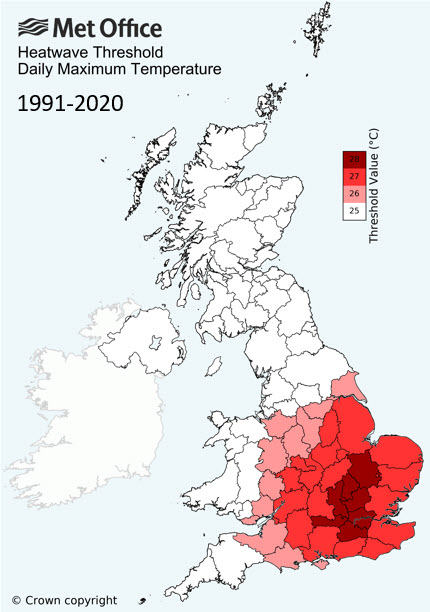
28/03/2022
This is a new plastic material that absorbs mercury has been
developed that can coat surfaces such as the insides of pipes. The reaction
between sulfur and dicyclopentadiene was optimised to form a shelf stable and
soluble low molecular weight oligomer. After a simple curing process at 140 °C
the material was rendered insoluble and resistant to acids and solvents. Taking
advantage of the soluble oligomer, silica gel was coated with the soluble
oligomer and validated in mercury removal applications. The coating technique
was also applied to metal, concrete, and polyvinyl chloride to illustrate broad
protection from corrosion and solvents. The coating was also repairable, with
surface scratches removed through the application of heat. In this way, the
coating is active in metal binding, protective against acids and solvents, and
repairable when damaged.
Photo Polmer Chemistry Journal
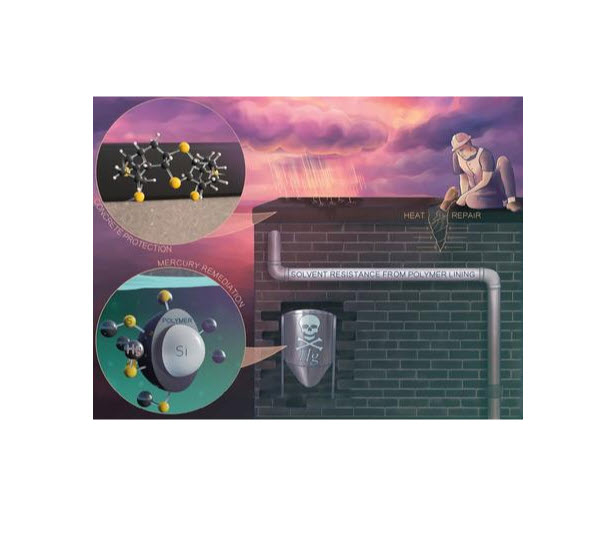
27/03/2022
A brief comparison of 5 of my solar panels over the past 10 years.
Photo Philip M Russell

26/03/2022
A brief comparison of all my solar panels over the past 3 years.
Photo Philip M Russell
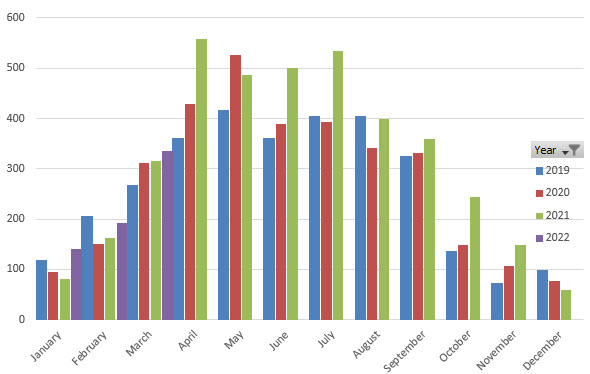
25/03/2022
A brief comparison of five solar panels over the past ten years.
Photo Philip M Russell
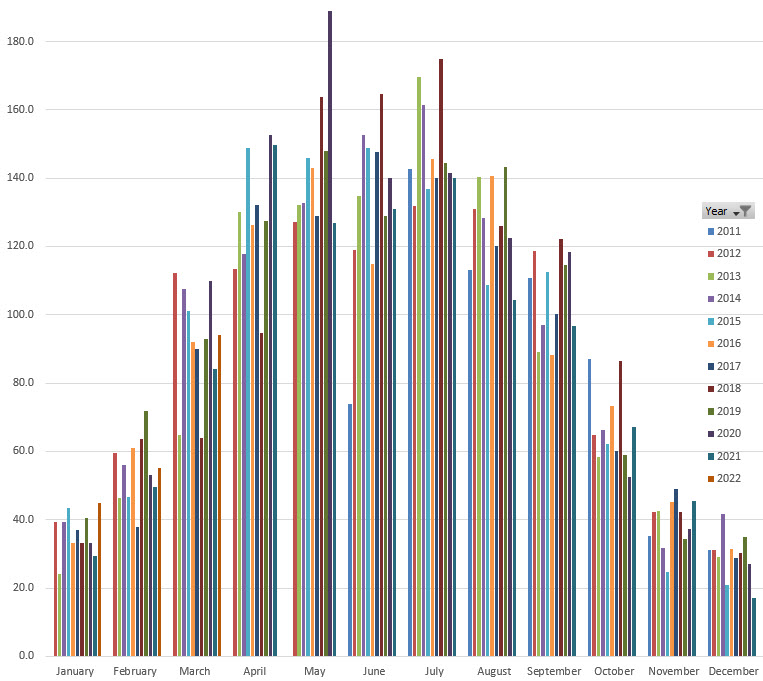
24/03/2022
Electric vehicles rely on batteries as the storage medium
for their energy, and batteries have a far lower energy density than those
offered by the fossil burning cars, which resulted in very low ranges of early
electric vehicles. There has been a gradual improvement in battery technologies
and this has increased the driving ranges of electric cars to approach
acceptable levels. However, despite the vast improvements in battery
technology, today consumers of electric vehicles face another difficulty – slow
battery charging speed. Currently, electric cars take about 10 hours to fully
recharge at home and even using the fastest superchargers at the charging
stations the batteries require up to 20-40 minutes to fully recharge the
vehicles. Scientists from the Center for Theoretical Physics of Complex
Systems have worked out that using quantum charging would lead to a 200
times speedup over classical batteries, which means that at home charging time
would be cut from 10 hours to about 3 minutes. At high-speed charging stations,
the charge time would be cut from 30 minutes to mere seconds.
Photo Pixabay

23/03/2022
The increasing need to cool
the air in our built environment is both a cause and an effect of
climate change. Air conditioning accounts for a large portion of global
greenhouse gas emissions today, which is estimated
at 3.9%; however, the role that humidity plays in these emissions is often
overlooked. The emissions associated with reducing air humidity (i.e.,
removing water vapour from air) are larger than emissions associated with
reducing air temperature (i.e., cooling air). The research team have
shown how dramatically humidity-related emissions will increase
with rising cooling demand around the world. They have calculated the minimum
separation energy for removing water vapour from air and find that this is at
least an order of magnitude less than the processes used today. New
technologies that split this cooling and humidity control problem into two
processes show potential to improve efficiency by 40% or more. One way to do
this is the use of liquid desiccant-based cooling. The researchers point out
that the use of liquid desiccants fundamentally changes the way humidity is
controlled and has theoretical efficiency limit that is 10 times higher than
the vapor compression cycle alone. A hypothetical technology — at only half
this new limit — would reduce cooling-energy emissions by 42% in 2050, with the
equivalent of avoiding 2,460 million tons of carbon dioxide annually.
Photo Joule
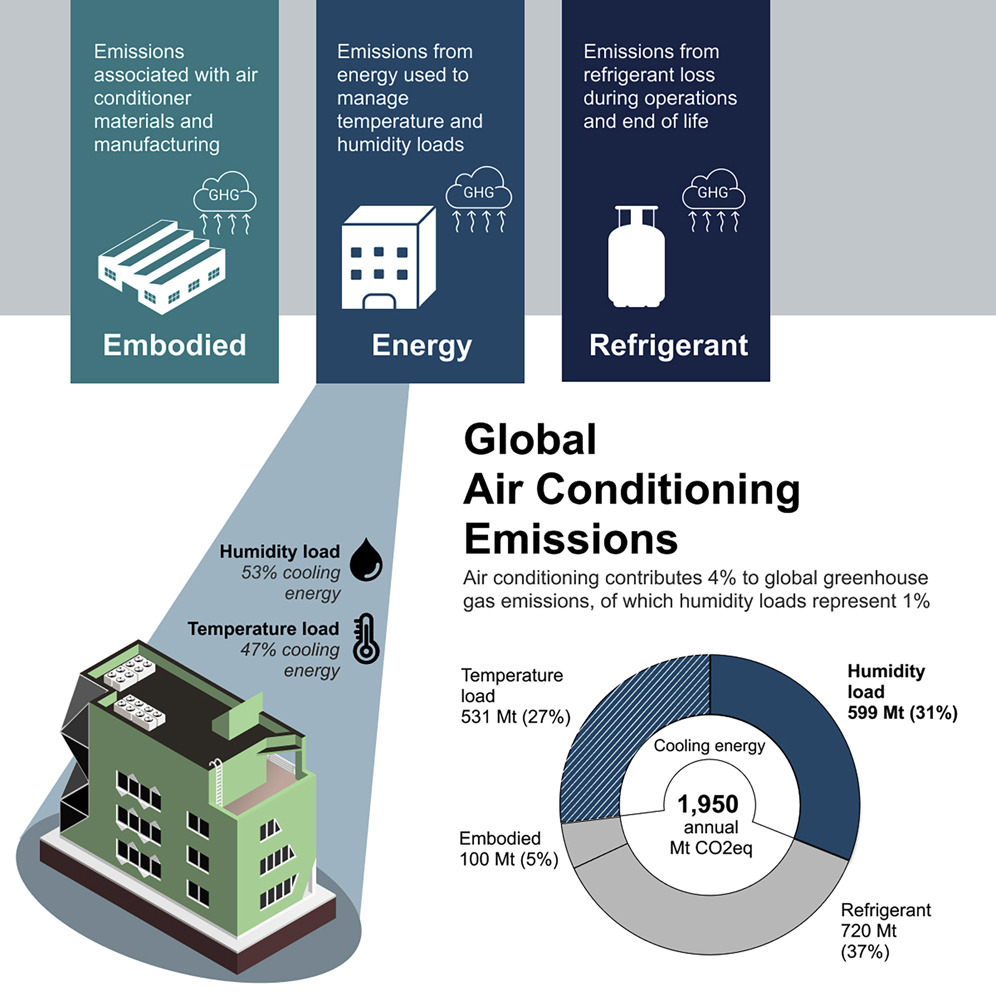
22/03/2022
The French-based hybrid solar module
manufacturer, Dualsun, has launched a new photovoltaic-thermal panel which is
based on shingle solar cells. The
panels consist of a patented heat exchanger that allows water to circulate in
the panel and optimises heat transfer with the photovoltaic cells.
Photovoltaic panels become less efficient at higher temperatures and combining solar
thermal and photovoltaic cells together is a novel and efficient way of solving
the problem. A standard photovoltaic panel only generates 20% of electricity
during operation; the remaining 80% is heat.
In addition to being wasted, this heat is also
detrimental to the solar panel’s efficiency, which drops when the panel rises
in temperature. The new panel is cooled by an innovative and
patented heat exchanger and thus generates more electricity than a standard
photovoltaic panel. Cooling the photovoltaic cells improves electricity
output by 5 to 15% depending on usage. The DualSun panel’s heat exchanger is
made of polypropylene. As it circulates through the exchanger, the water warms
up by recovering the heat emitted by the photovoltaic cells. This water can
reach a temperature of up to 70°C and can therefore be used to cover the
building’s various heating needs. Unlike standard thermal solar panels,
the added benefit of this technology is that it is not prone to overheating
risks.
Photo Dualsun

21/03/2022
Both the North Pole and the South Pole showing alarmingly
high temperatures for this time of year the Antarctic in some areas is 40
degrees Celsius above its normal temperature. At this time of the year it
should be cooling rapidly but presently it is still much warmer than it should
be. At the same time the Arctic regions are also much warmer than they should
be and are already starting to melt with temperatures as high as plus 7 degrees
Celsius. These high temperatures at the poles are a warning of the disruption
of the earth climate systems and is indicative of what well may be happening
this summer. The danger here is twofold: the heat waves at the poles are a very
strong signal of the amount of damage that humanity is causing on the climate
as the polar seas melt particularly in the Arctic the dark sea will absorb more
heat than the reflective ice and will warm the planet much further. The warming
of the Antarctic is exposing land that has not seen the sky in a Millennium and
this melting of the ice is raising the sea levels.
Photo Pixabay

20/03/2022
Researchers detail how the brown
carbon released by burning biomass in the northern hemisphere is accelerating
warming in the Arctic and warn that this could lead to even more wildfires in
the future. Blazing wildfires are accompanied by vast plumes of brown
smoke, made up of particles of brown carbon suspended in the air. This smoke
poses health hazards, and can even block out the summer sun, and researchers
suspected that it might also be contributing to global warming.
In 2017, the
Chinese icebreaker vessel Xue Long headed for the Arctic Ocean to
examine which aerosols were floating around in the pristine Arctic air and
identify their sources. The scientists on the vessel were particularly curious
about how brown carbon released by wildfires was affecting the climate and how
its warming effects compared to those of denser black carbon from
high-temperature fossil fuel burning, the second most powerful warming agent
after carbon dioxide.
Their results showed
that brown carbon was contributing to warming more than previously thought.
"To our surprise, observational analyses and numerical simulations show
that the warming effect of brown carbon aerosols over the Arctic is up to about
30% of that of black carbon," says senior author Pingqing Fu, an
atmospheric chemist at Tianjin University.
In the last 50
years, the Arctic has been warming at a rate three times that of the rest of
the planet, and it appears that wildfires are helping to drive this discrepancy.
The researchers found that brown carbon from burning biomass was responsible
for at least twice as much warming as brown carbon from fossil fuel burning.
Like black carbon
and carbon dioxide, brown carbon warms the planet by absorbing solar radiation.
Since warming temperatures have been linked to the rise in wildfires in recent
years, this leads to a positive feedback loop. "The increase in brown
carbon aerosols will lead to global or regional warming, which increases the
probability and frequency of wildfires," says Fu. "Increased wildfire
events will emit more brown carbon aerosols, further heating the earth, thus
making wildfires more frequent."
Photo Pixabay

19/03/2022
Prime Minister Scott Morrison declared a Natioanl emergency to ensure all the emergency powers are available and that any red tape can be removed in the delivering of services and support on the ground. Heavy rains have created the current emergency in New South Wales and Queensland states, where some of the flooded communities were battling fires two years ago. Some areas have endured the highest floods ever recorded. More than 20,000 homes and businesses have been flooded in southeast Queensland and 13 people have been reported to have died.
Photo Pixabay
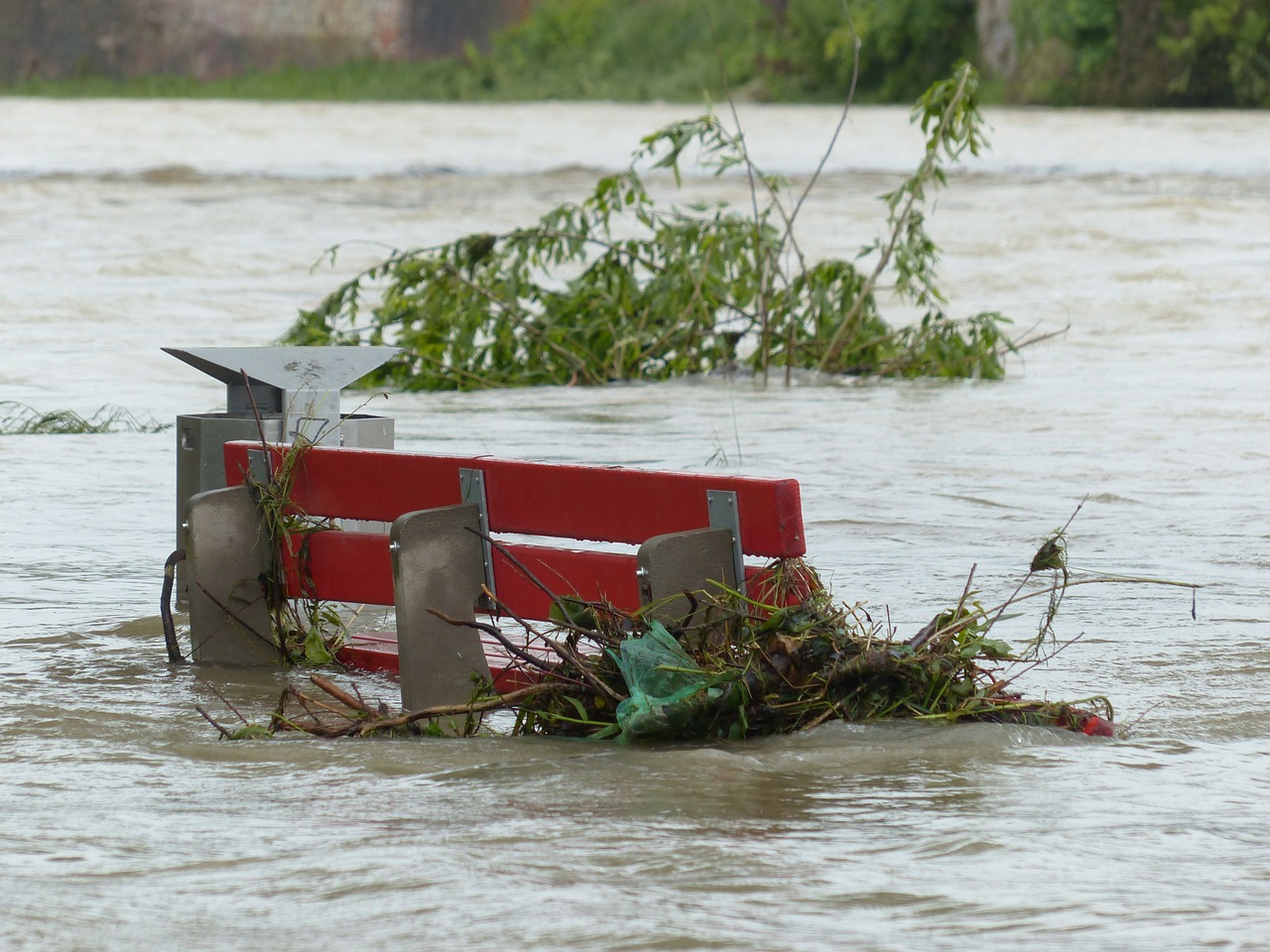
18/03/2022
Boris Johnson went to the
Middle East, to see the Saudis and UAE, to ask it they would consider
increasing their output, but so far the answer appears to be no. The
Middle Eastern countries work with Russia to control the flow of Oil and Gas to
maximise the profits. But money has a way of talking and the Saudis and UAE
want still more money. Iran and its oil might be another possibility with the
thawing of relationships. Will getting more oil from Saudi Arabia make the greenhouse
gas pollution greater? The honest answer is if it is just changing the supplier
then Russia gives less and the Saudi’s more then there should be no overall
change in the world, but this will affect the Saudi’s more and they are
attempting to control the emissions. Russia certainly won’t be happy about this
and on current actions might do something stupid. Russia’s threats to cut off
Gas too Europe won’t happen because this is Putin’s major source of income and
finding other suitable buyers like India and China are geographically more
difficult to supply.
Photo Pixabay
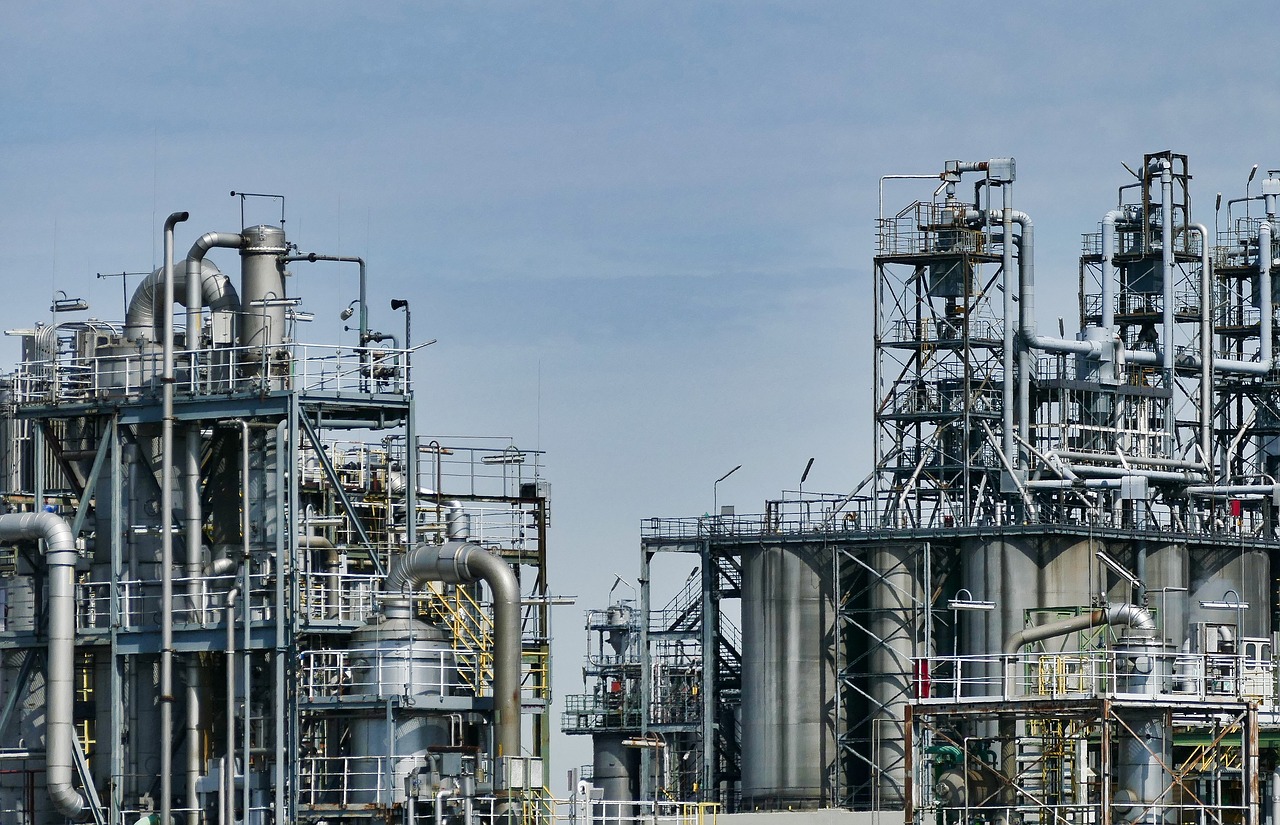
17/03/2022
A massive release of greenhouse gases, likely triggered by volcanic activity, caused a period of extreme global warming known as the Paleocene-Eocene Thermal Maximum (PETM) about 56 million years ago. A new study now confirms that the PETM was preceded by a smaller episode of warming and ocean acidification caused by a shorter burst of carbon emissions.The new findings, published March 16 in Science Advances, indicate that the amount of carbon released into the atmosphere during this precursor event was about the same as the current cumulative carbon emissions from the burning of fossil fuels and other human activities. As a result, the short-lived precursor event represents what might happen if current emissions can be shut down quickly, while the much more extreme global warming of the PETM shows the consequences of continuing to release carbon into the atmosphere at the current rate.“It was a short-lived burp of carbon equivalent to what we’ve already released from anthropogenic emissions,” said coauthor James Zachos, professor of Earth and planetary sciences and Ida Benson Lynn Chair of Ocean Health at UC Santa Cruz. “If we turned off emissions today, that carbon would eventually get mixed into the deep sea and its signal would disappear, because the deep-sea reservoir is so huge.”This process would take hundreds of years—a long time by human standards, but short compared to the tens of thousands of years it took for Earth’s climate system to recover from the more extreme PETM.The new findings are based on an analysis of marine sediments that were deposited in shallow waters along the U.S. Atlantic coast and are now part of the Atlantic Coastal Plain. At the time of the PETM, sea levels were higher, and much of Maryland, Delaware, and New Jersey were under water. The U.S. Geological Survey (USGS) has drilled sediment cores from this region which the researchers used for the study.
Photo USC
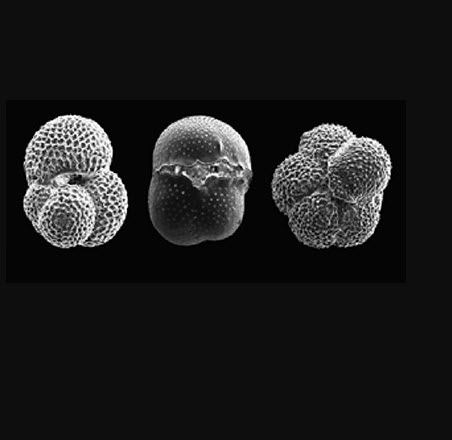
16/03/2022
Russia supplies around 8% of the UK's oil and just
over 4% of our gas. In in desperate attempt to stop this Boris Johnson
has been talking to Saudi Arabia and UAE in efforts to remove any dependence on Russian
Fossil fuels. This does fly in the face of some of the COP 26 agreements, but
then the world did not expect Russia to attack Ukraine and throw much of the
world into turmoil. The UK is looking to change the dependence also by including
new investments and commitments to renewable energy. Last month, Solar, hydro
and wind power combined made up nearly 45% of the UK's energy mix and this is
set to get better as we head into the summer. We need to stop the Russian gas
and oil as soon as possible as we are paying for Putin to continue this
unprovoked murder of the population of Ukraine. This move is likely to make
climate campaigners, the green wing of the Conservative party, the Labour
benches and others very uncomfortable with this decision because it constitutes
an abandonment of the spirit of the climate change conference COP26 but helping
to stop Putin my well be more important.
As Boris does this what is Europe doing about its Russian Oil and Gas
supplies since they are in a far worse position than us.
Photo Panasonic

15/03/2022
The
European Commission is working on their REPowerEU plan, an ambitious roadmap to
reduce Russian fossil fuel dependency by two-thirds in this year to attempt to
stop the price shocks that are threatening European families and businesses. In
the next few years the plan seeks to eliminate dependence on Russian fossil
fuels entirely well before 2030. The REPowerEU plan’s target is to install 10
million heat pumps over the next five years is a really modest but achievable,
looking at the increase over recent sales trends. In 2020, approximately 1.8
million EU households purchased a heat pump and are set to install many more in
2022.
Photo Panasonic
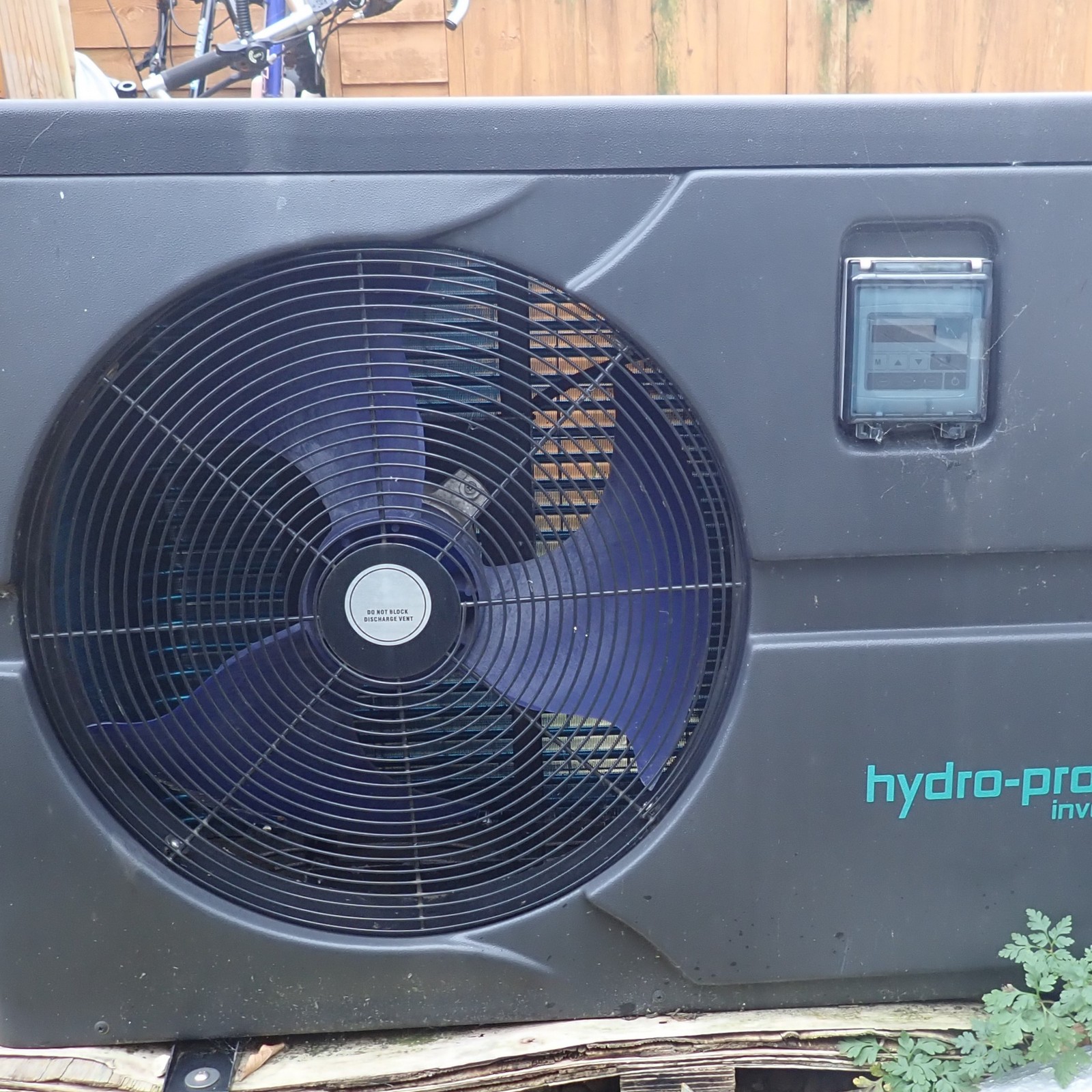
14/03/2022
Panasonic have a new product
for the Japanese market the Eco Cute, which is an energy-saving heat pump water
heater that boils water using atmospheric heat energy. This product features a good
energy-saving performance with approximately one third of the amount of energy
used compared with that of when only using electrical energy. The
Japanese market uses a different type of hot water system than Europe by having
a tank of near boiling water. This new system saves
energy with always checking and keeping adequate bathwater temperature, and by
boiling water at night by using the heat of the remaining warm bath water the
system also enables users to select and set a mode from hot, standard, luke warm
temperature settings for how many minutes, without adding water, i.e. saving
water at the same time. These products have a solar charge function
which utilizes surplus electricity generated and stored from their photovoltaic
source. Photo Panasonic
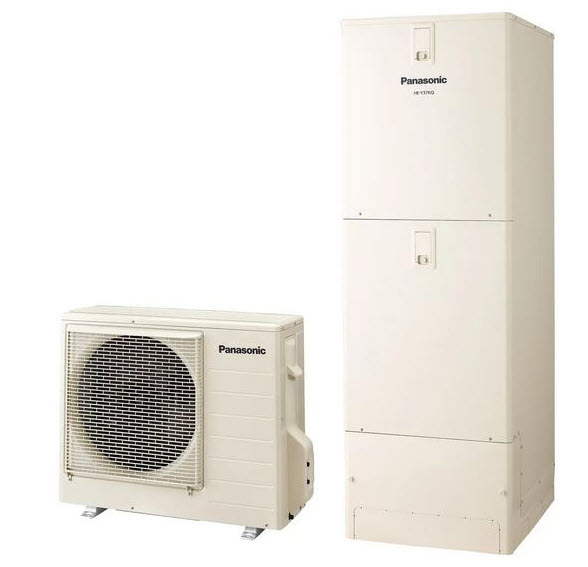
13/03/2022
Researchers, from the
University of Cambridge, are using 3D printing to create grids of high-rise
‘nano-housing’ where photosynthetic bacteria can grow quickly. The researchers
were then able to extract the bacteria’s waste electrons, left over from
photosynthesis, which could be used to power small electronics. This has been
tried previously but the Cambridge researchers have found that providing the
bacteria with the correct type of environment can increase the amount of energy that can be extracted
by over an order of magnitude. The approach is competitive against traditional
methods of renewable bioenergy generation and has already reached solar
conversion efficiencies that can outcompete many current methods of biofuel
generation.
Photosynthetic bacteria, or cyanobacteria, are
the most abundant life form on Earth. In
order to grow, cyanobacteria need lots of sunlight – like the surface of a lake
in the summertime. To extract the energy the Cambridge team 3D-printed custom
electrodes out of metal oxide nanoparticles that are tailored to work with the
cyanobacteria as they perform photosynthesis. The electrodes were printed as
highly branched, densely packed pillar structures, like a tiny city.
Photo

12/03/2022
A research team at the Korea Institute of Science and
Technology (KIST) have developed a process technology and catalyst for removing
hydrogen sulphide from the process of ethylene production from methane in
biogas. This biogas contains a significant amount of hydrogen sulfide, which interferes with the
catalytic reaction in ethylene production. The new technology improves the
ethylene production by oxidizing and removing hydrogen sulfide during the
production process. This creates a biogas that burns cleaner with less
pollution.
Lien Thi Do et al.; "Hybrid catalysts containing Ba, Ti, Mn,
Na, and W for the low-temperature oxidative coupling of methane"; Applied
Catalysis B: Environmental; Volume 298, 5 December 2021, 120553
Photo Pixabay
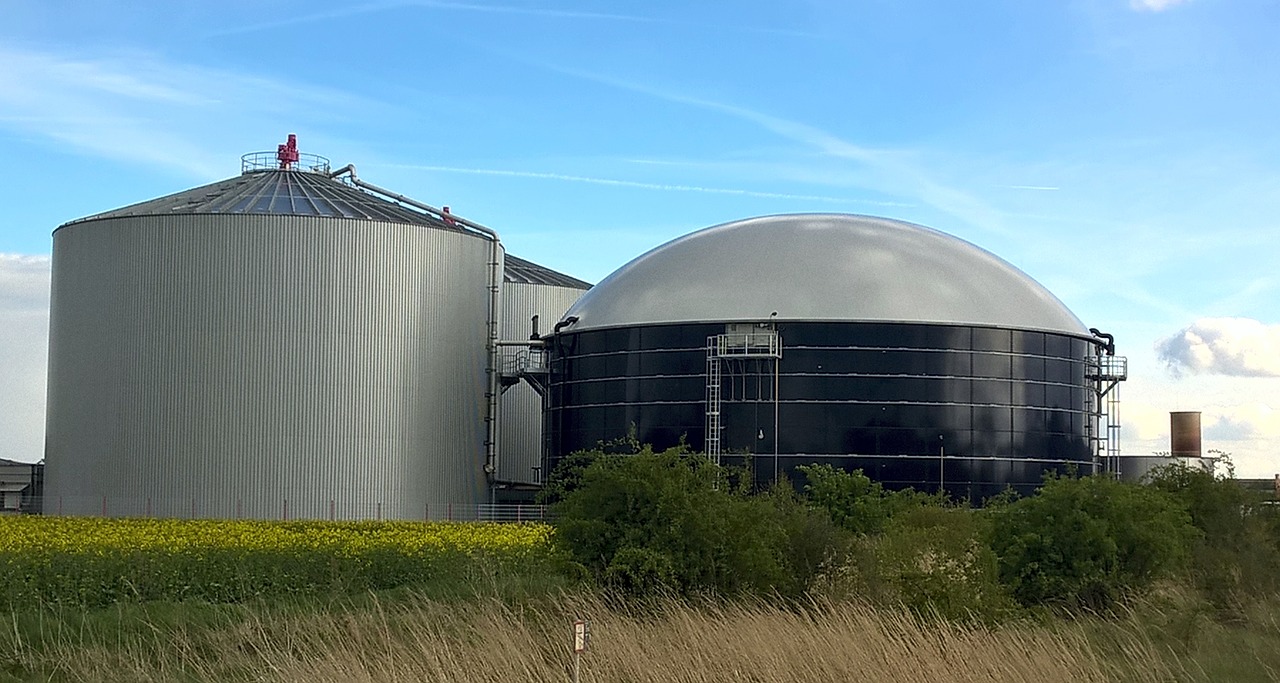
11/03/2022
Researchers at the University of Bremen are currently
working on the next generation of safe energy storage systems using water based
zinc ion batteries. Because this technology is water-based, the risks of
explosion or fire reduced. The zinc-ion batteries are composed primarily of
metallic zinc and other mostly inexpensive and non-toxic materials. This not
only reduces the final price of green energy, but at the same time reduces the
risk of environmental pollution. The research group is focusing on
developing new zinc-based anodes, to improve the stability and lifetime of
zinc-ion batteries and the development of low-cost environmentally friendly
cathode materials and the optimization of water-based electrolytes.
Their goal is to accelerate the commercialization of this promising,
environmentally friendly battery technology.
Photo Federico Scarpioni / Universität Bremen
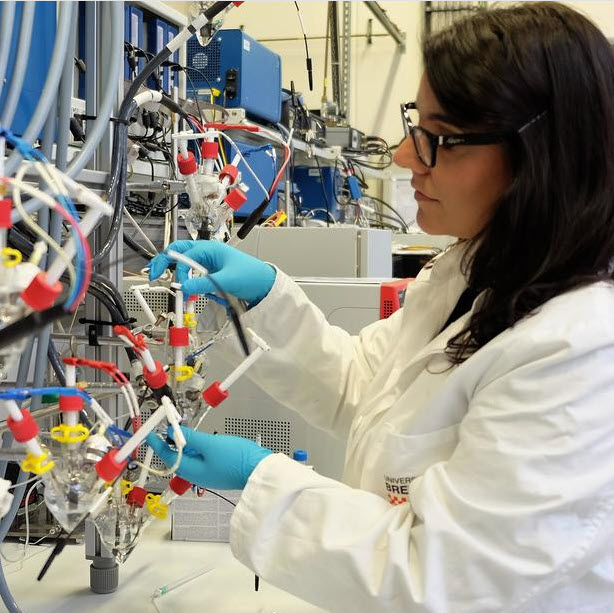
10/03/2022
It’s
widely known that when methane is transported in pipes and it leaks the new
study has found that cookers leak methane even when they’re not being used. But
it is a worry because methane is 86 times more potent than carbon dioxide.
Methane makes up about 90% of natural gas which is used in our homes for
heating and cooking purposes. This recent study shows that even when heaters
and cookers are turned off methane leaks. Considering the amount of time a
cooker is used we can see that more than 75% of this leakage occurs when the
cooker is turned off. Ventilation can help the kitchen but it doesn’t help the
climate impacts of this Greenhouse gas and the results of burning methane. The only
way to do this is to cook on electric from a renewable source.

9/03/2022
Hydrogels
with their amazing ability to swell and take up water are used in nappies and
other products to capture moisture.
A team of researchers
from the University of Texas in Austin have found a way of extracting large
amounts of freshwater from air using a specially developed hydrogel which also
contains a special microscopic salt. until now
extracting freshwater from the atmosphere has not been feasible since the
system has been way too slow and inefficient. This system can be improved by
the use of hydroscopic salts, but
these usually are not compatible with the hydrogel itself and the grades the
performance. The researchers have overcome these issues by developing a salt
friendly hydrogel and now the gill grains can absorb and retain water when
combined with this hygroscopic salt. The team can extract almost 6 L of pure
water per kilogram of the material in 24 hours. Once the water is in the
hydrogel the hydrogel can be placed in a condenser and the water can be
separated from the hydrogen and this process can be repeated again and again.
So this may present a good system for extracting water from the air for places
that do not have access to freshwater.
Photo Pixabay
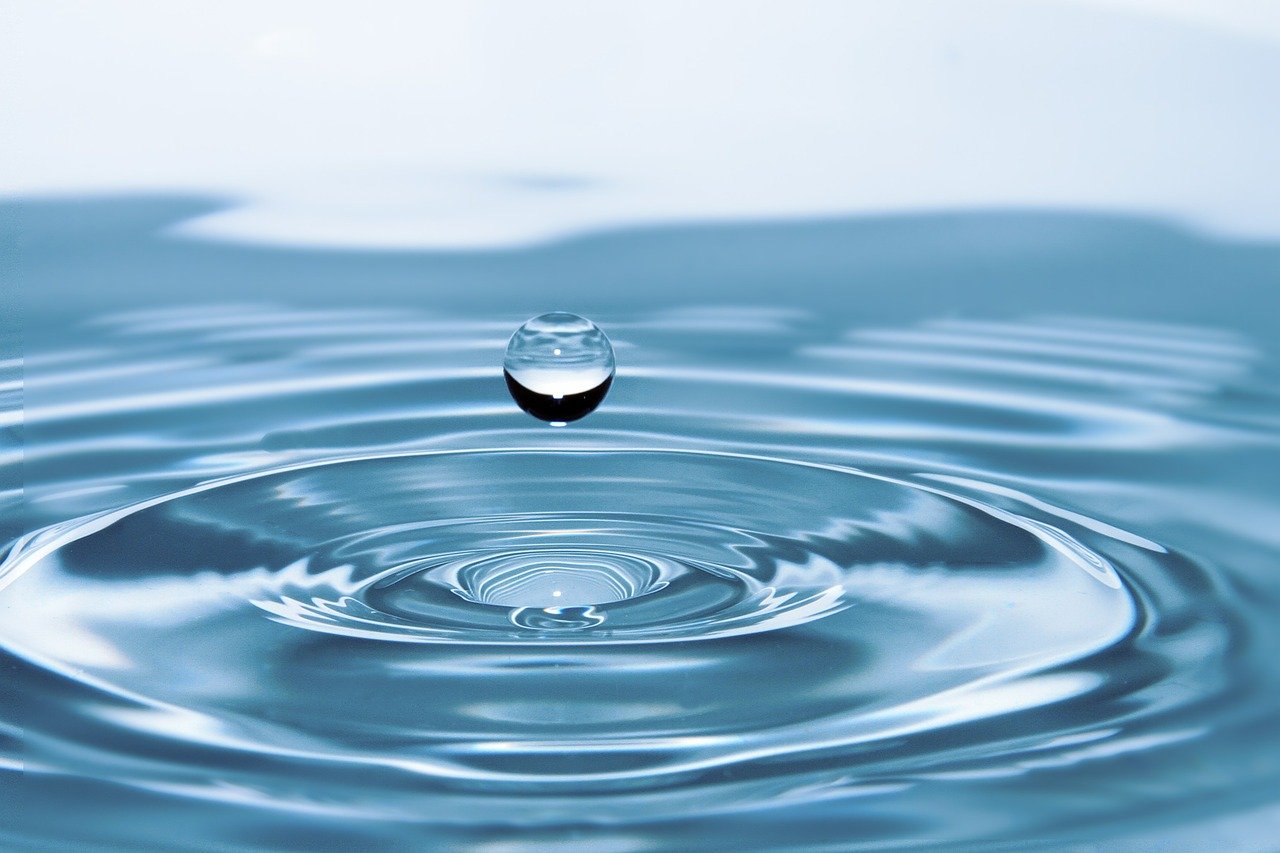
8/03/2022
The idea of regenerative agriculture
has been around for many many years but it is now starting to become more
popular. It’s appearing a lot in academic research since the 2010s and many
farmers are starting to use this system to try to improve and enhance the soil
health to optimise all their resource management to improve the water quality
and availability and as a byproduct to alleviate climate change. Regenerative
agriculture relies on minimal soil disturbance and a large amount of composting
this improves the fertility of the soil with the sequestrating of more carbon
which rebuild the quality of the topsoil and restores the local biodiversity.
If all farms in the UK started doing this then the amount of carbon
sequestration would make a very significant difference to our carbon dioxide emissions.
And by using the composting techniques the soil nutrients stay very high and
this can improve the yield of crops that are grown. Going back
to the old system of crop rotation and rotational grazing also allows the
nutrients in the soil to recover which adds to the improvement in quality of
farming.
Photo Pixabay

7/03/2022
Atlassian Founder Mike
Cannon-Brookes and Canadian asset manager Brookfield put a bid in to buy
Australia’s most polluting power company with the purpose of shutting it down.
Not surprisingly, this bid was rejected. Australia’s Prime Minister,
Scott Morrison, reacted in horror that anyone would want to buy and close down
a coal power station. AGL is Australia’s biggest coal generator and
biggest emitter of greenhouse gases. The company is undergoing a demerger
process creating Accel Energy to operate its fossil fuel assets and retaining
the company’s renewable energy assets. AGL recently announced the planned
closure of two coal-fired power plants but this is not good enough for the
environment since Loy Yang plant burns the highly polluting brown coal.
Photo The AGL Energy Loy Yang Power Station in the Latrobe Valley, Australia.Photographer: Carla Gottgens/Bloomberg
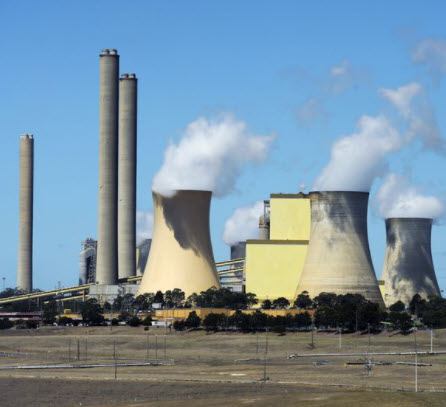
6/03/2022
It’s a
simple fact that when you make beer the yeast produces carbon dioxide as well
as turning the sugar to alcohol. The carbon dioxide normally goes to waste, but
the Clearwater Brewery is now capturing that carbon dioxide that’s released in
the brain process compressing it purifying it to package more beer. This carbon dioxide is then
converted to carbonate which is used to add fizz to the beer. By recycling
the amount of gas that the company buys from outside vendors has decreased so
there is a significant cost saving as well as helping the environment. There is
a significant cost to this carbon dioxide retrieval and recycling system but
the company feels this will be worthwhile in the long term. This type of system
could be applied to other industries and could help lessen global warming.
Photo Pixabay
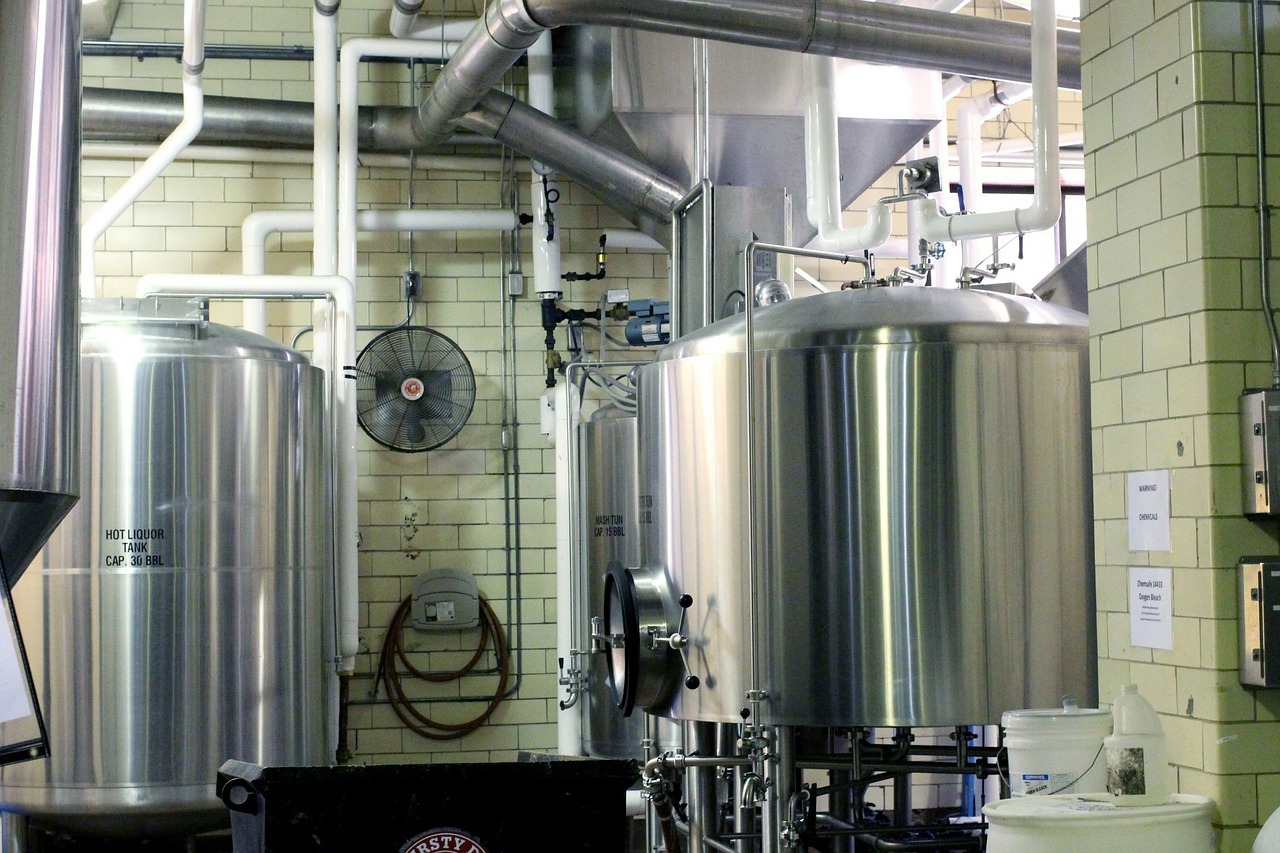
5/03/2022
Scientists based in the University of
São Paulo, Brazil and the University of Coimbra’s School of Science and
Technology in Portugal, have developed an
environmentally sustainable process to produce biodegradable plastic using
pigment extracted from yeast by using green solvents. These solvents can extract two
carotenoids, astaxanthin and beta-carotene, from the yeast, Phaffia
rhodozyma to produce a biodegradable plastic film based on bioactive starch
without any need for additional purification. This biodegradable plastic could be
used in the future in smart packaging with antioxidant and anti-microbial
properties. This
plastic has similar applications to those of conventional plastics derived from
fossil fuels. These sustainable bioplastics could become become commercially
available in a few years with sufficient funding.
Photo Pixabay

4/03/2022
Researchers
at the Centre for Sustainable and Circular Technologies (CSCT) at the
University of Bath, have developed a mild and rapid chemical recycling process
for polycarbonates, a robust class of plastics commonly used in construction
and engineering. Using a zinc-based catalyst and methanol, the researchers were
able to completely break down commercial poly(bisphenol A carbonate) (BPA-PC)
beads within 20 minutes at room temperature. The waste can then be converted
into its chemical constituents, bisphenol A (BPA) and dimethyl
carbonate (DMC), which means these chemicals can be recycled indefinitely. The BPA recovery prevents leakage of a potentially
damaging environmental pollutant into the ecosystem. This method creates
new opportunities for polycarbonate recycling under mild conditions, helping to
promote a circular economy approach and keep carbon in the loop indefinitely.
This type of recycling would pay for itself in the products produced.
Photo Pixabay
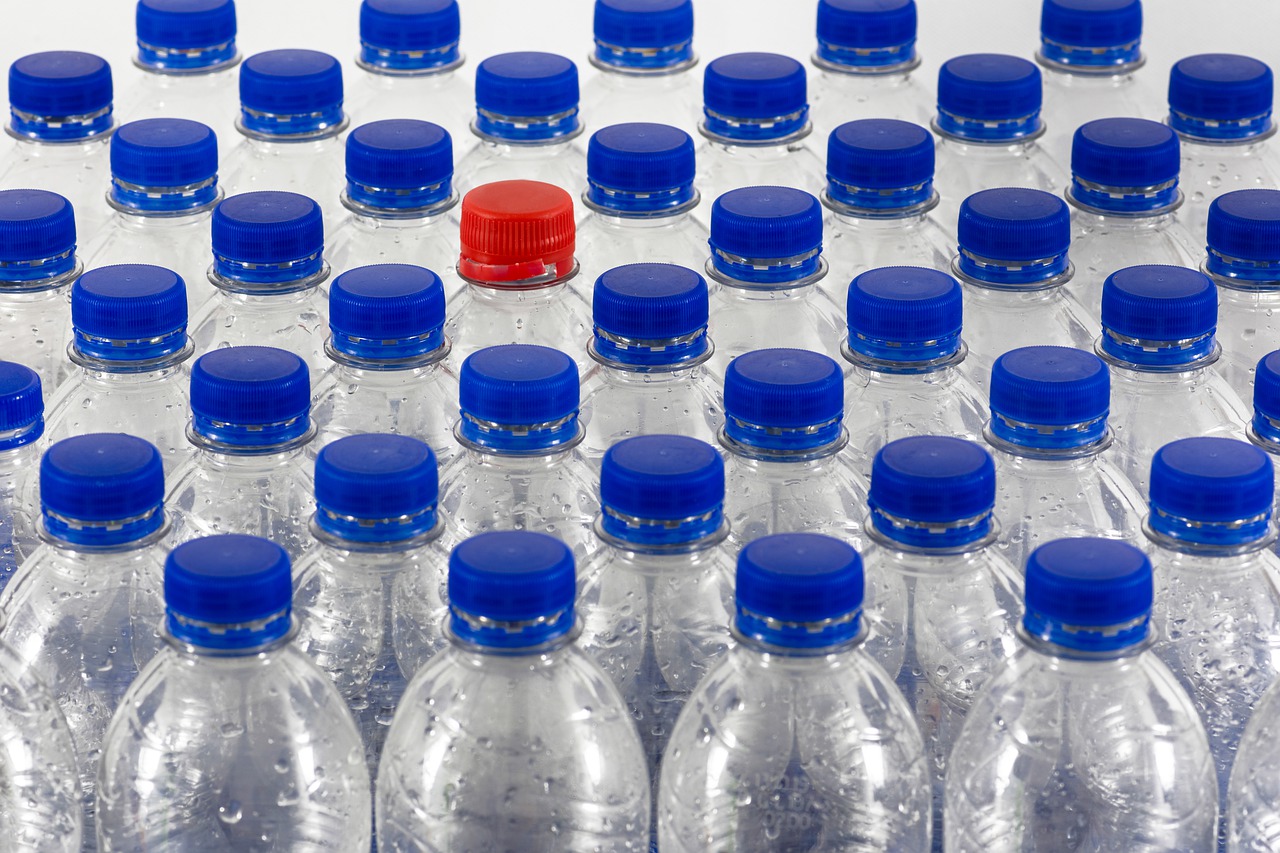
3/03/2022
Researchers at Northwestern
University,Illinois have reprogrammed the carbon-fixing bacterium Clostridium
autoethanogenum, which naturally ferments
carbon oxide gases for energy, resulting in ethanol as an end product. From
ethanol various other chemicals can easily be made like acetone or propan-2-ol.
Acetone and propan-2-ol have a
combined market value of over £7.4 billion. They are widely used as industrial
solvents and to make plastics, including acrylic glass and polypropylene. The C. autoethanogenum’s
genome was examined for enzymes that would enable the production of acetone or
isopropanol from acetyl-CoA, a common intermediate in metabolism. The genes
that encode these enzymes were then introduced and tested in different strains
of the bacterium to optimise production of acetone and isopropanol. This
has then been tested on an industrial scale in a 120 litre loop reactor
connected to a carbon dioxide waste stream from a steel plant. This process can
easily be changed by swapping out the bacteria to produce other chemicals.
Photo Nature
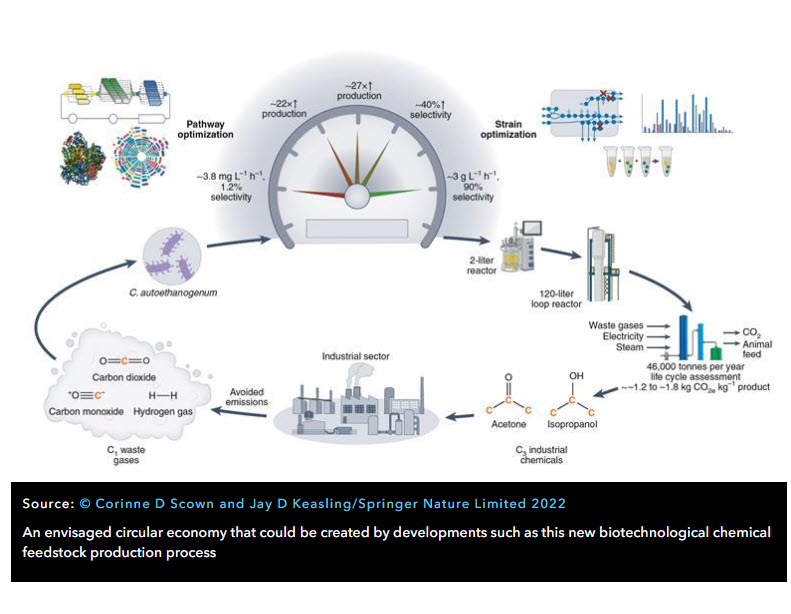
2/03/2022
The Intergovernmental Panel on Climate Change (IPCC) have published their bleakest assessment yet
for the impacts of climate change risks on human health, society, agriculture, ecosystems and wildlife. In the second
instalment of the sixth assessment report (AR6) they have looked at the risks arising from
climate change looking at specific threats and what can be seen are some of the
most worrying factors yet. Many of the future climate related risks and now
seem to be more severe than previously thought and that we may have passed the
point of no return on several factors already. The observed climate impacts in
the last year have shown that many of the conditions are occurring sooner
rather than previously thought there are large regional variations and Africa
is being particularly impacted.
Photo Pixabay
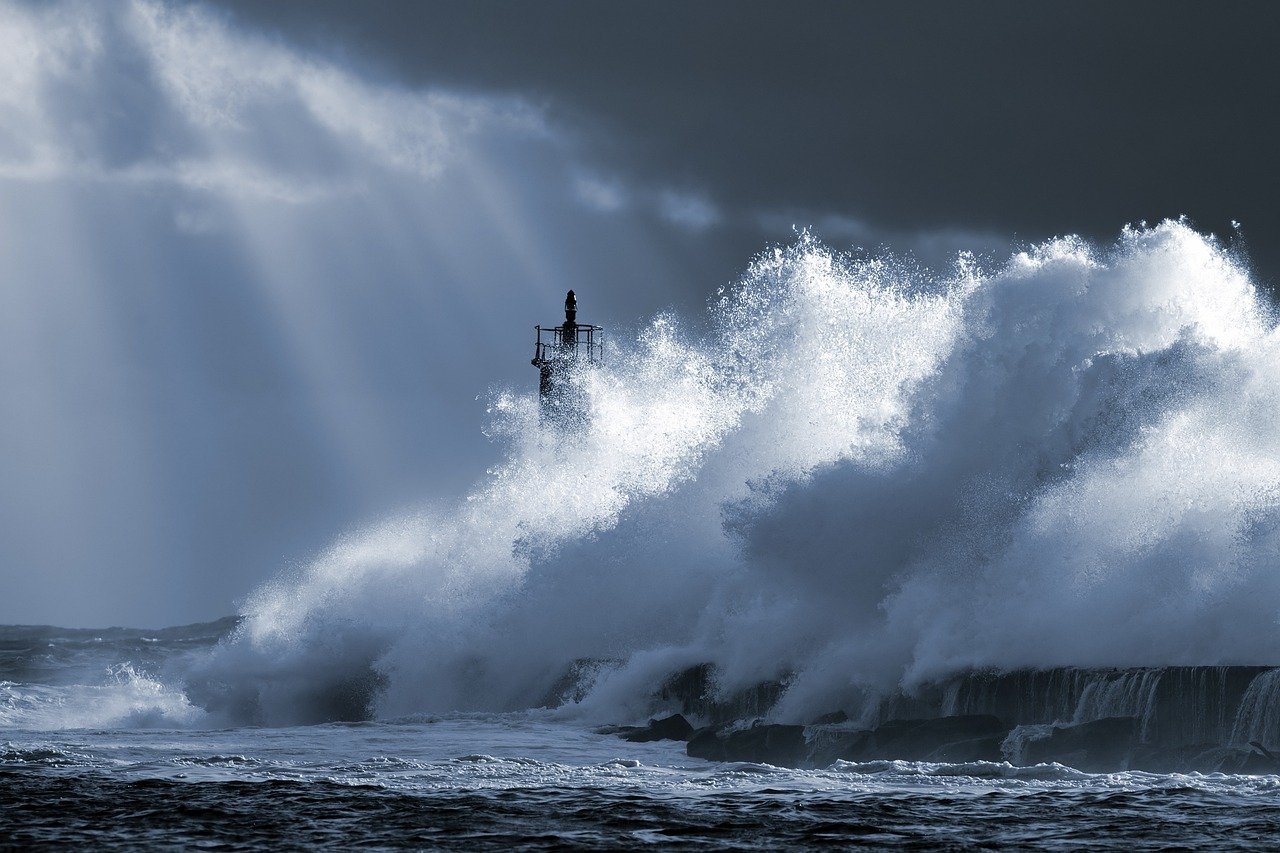
1/03/2022
The European Chemicals Agency
(Echa) has proposed an EU-wide ban on all perfluoroalkyl and polyfluoroalkyl
substances (PFAS) in firefighting foams, to prevent groundwater and soil
contamination. The agency’s proposal would ban the sale, use and
export of all PFAS in firefighting foams. The agency has calculated the costs
of the proposal to be about £5.8 billion and this will include the cost of
modifying equipment for using PFAS-free foams.
Photo Pixabay
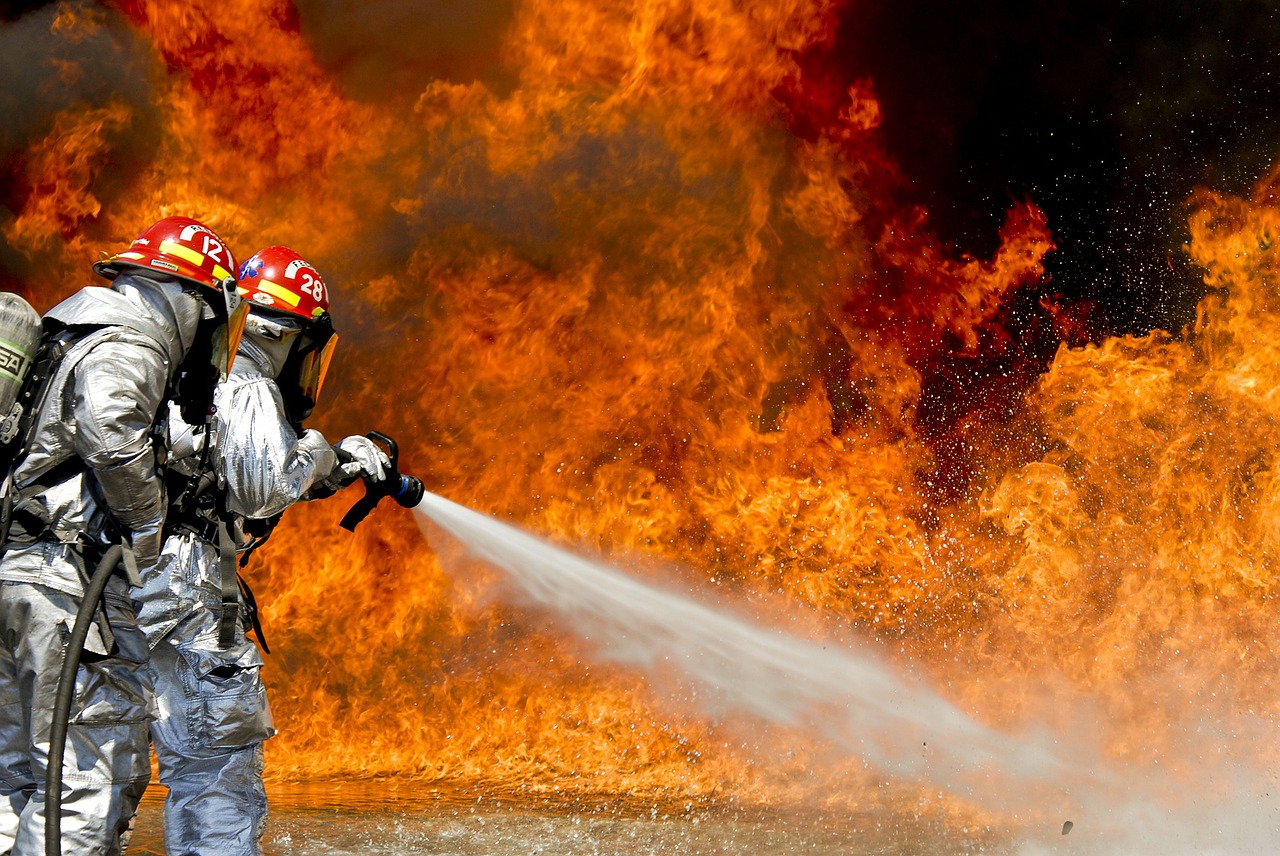
New ways, New technology